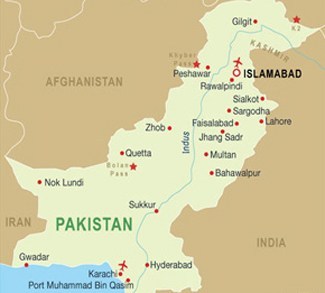In 2015, Indian intelligence agencies tracked down an active jihadi cell operating from the Indian state of Uttar Pradesh. However, little did the agencies realise that they were, in fact tracking an Al-Qaeda cell in India, till they stumbled upon Mohammed Asif, head of Al-Qaeda’s recruitment and training wing in India. Subsequently, three operatives of Al-Qaeda in the Indian Subcontinent (AQIS), namely Mohammed Asif from Sambhal, Uttar Pradesh, Maulabi Abdul Rahman, alias “Kataki,” a madrasa teacher named from Odisha, and Zafar Masood, the principle financier from Sambhal, Uttar Pradesh were arrested in December 2015. In January 2016, a preacher named Maulana Anzar Shah, and a Jamshedpur-based module consisting of Ahmed Masood Akram, Nasim Akhtar, and Abdul Sami have been arrested for their connections to the AQIS.
Al Qaeda’s Indian operations is headed by Maulana Hasim Umar with Qasim as his deputy along with other operatives namely Usman Hyderabadi, Serjil, and Rehan. All of them are presently believed to be in Pakistan. Further investigations revealed that the head of AQIS is actually Sanaul Haq, known by his nom de guerre Maulana Hasim Umar, a native of Sambhal in Uttar Pradesh. Except for Usman Hyderabadi who hails from Hyderabad, all others belong to Uttar Pradesh and Jharkhand.
The seeds of the current Al Qaeda’s Indian operations were originally sown way back in 2007-2008 in Pakistan. According to David Coleman Headley, one of the key accused in the 2008 Mumbai attacks briefly talked about Al Qaeda’s Indian focus in his confession. The setup known as the “The Karachi setup” was headed by a person named Abdur Rehman, alias “Pasha,” and had the blessing of Osama Bin Laden. The group was named Jund-al-Fida (Army of Fidayeens) by Osama Bin Laden himself. However, it is not clear whether there was any attempt to actually deploy this group in India at that time. The focus of this group was to conduct operations in India using terrorists of Indian origin.
This is the first instance where an Al-Qaeda module directly linked to the Al-Qaeda core has been discovered in India. Interestingly, India Prime Minister Narendra Modi was recently briefed at an internal security conference on an earlier AQIS attempt to attack Indian targets from outside India. Three operatives of AQIS attacked Pakistan’s Mehran naval base in Karachi in September 2014 in an attempt to hijack a Pakistan naval ship to carry out attacks on the Indian coast. Though incidents like these appear straight out of a Bond movie, it has set the security planners in India thinking.
Al Qaeda founded Jamaat Qaidat al-jihad fi’shibhi al-qarrat al-Hindiya (Organisation of The Base of Jihad in the Indian Sub-Continent) in August 2014. The primary objective of this entity is to fight for the oppressed Muslim population in India, Myanmar, and Bangladesh. And by extension, integrating operations in three countries under one single umbrella, Al-Qaeda attempts to benefit from issues related to different countries in the region and stay relevant in a highly competitive environment. Such an integration of operations of AQIS in countries abutting each other, would ideally facilitate movement of men, material, money and also safe haven, given the free border between India and others especially Myanmar. Open source reports indicate that the Al-Qaeda cells in Bangladesh comprising Rohingya Muslims were tasked to provide logistical support to the cells in India in order to carry out terror attacks way back in 2014. Arrangements such as these would create a new generation of fighters who would shed their national identity to pursue a violent ideology in the Indian sub-continent.
Competition among groups such as AQIS and Islamic State will also be a causal factor impacting the region’s security situation. The meteoric rise of Islamic State in India as highlighted by Geopoliticalmonitor.com, would push AQIS to up the ante. In an attempt to match the actions of the Islamic State, AQIS would ratchet up activities including conducting spectacular attacks to solicit local funding and also attract more local recruits.
As observed in other groups in India, the jihadi cell structure is constituted by cadres drawn from a particular locality. Al-Qaeda’s initial membership appears to have be drawn from Sambhal in Uttar Pradesh. Additionally, operatives at large who are presently in Pakistan also hail from the Sambhal region. This aspect is germane to the idea of area-specific cell structure as has been witnessed with other local groups in India. Groups like Indian Mujahideen have formed dedicated local cells with members drawn from one particular area, harnessing the network and connections within that particular area. For instance, Indian Mujahideen was founded by Riyaz and Iqbal Bhatkal, both hailing from a town called Bhatkal. This led to influx of recruits from Bhatkal into the ranks of Indian Mujahideen, including Shafi Armar, the present head of AuT (formerly with Indian Mujahideen). Similar modules of this nature, have been formed by the Indian Mujahideen like the Azamgarh module in Uttar Pradesh, Dharbanga module in Bihar, and the Pune and Nanded modules in Maharashtra, where the core cell structure has been built with members drawn primarily from that locality. Given this phenomenon, Islamic State’s linkages with local groups, who could act either as a facilitator or as an affiliate, would provide them access to an existing network within a particular area or locality. And most of the members of the current Al-Qaeda module in India are former members of HarkatulMujahideen (HUM), which has significant presence in India, Bangladesh, and Pakistan. This network could be harnessed to support the activities of AQIS in India considerably.
Interestingly, the rise of AQIS could inspire and motivate other violent fringe within India. For instance, the French embassy in Bengaluru received a threat letter last week, warning French President Francois Hollande not to visit India to participate in India’s Republic day celebrations. This threat originated from a relatively obscure group called the “The Base Movement” ostensibly drawing inspiration from Al-Qaeda. The threat letter carried a three line purported warning message to the French President with an image of Osama Bin Laden.
A decade or so after the 9/11, Al-Qaeda’s core is obliterated with its remnants and franchisees running the show. Predictably, Al-Qaeda has deliberately chosen India as its key pivot in its South Asia strategy with a principle objective to resurrect itself, given India’s large Muslim population. This attempt by Al-Qaeda to gain a foothold in the Indian subcontinent, has already been rejected by the peaceful Islamic community in India. Nevertheless, this attempt by AQIS has opened a new front which is bound to unleash a new tribe of terrorists in India.




